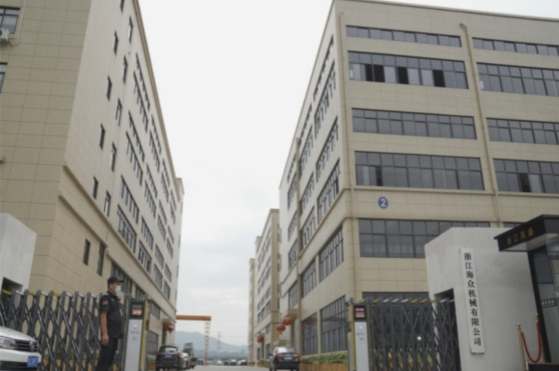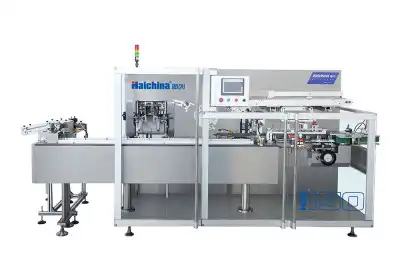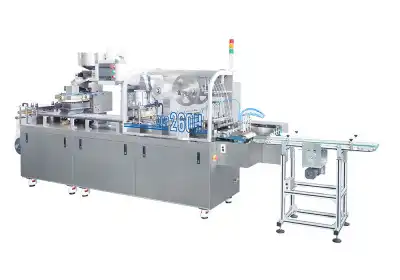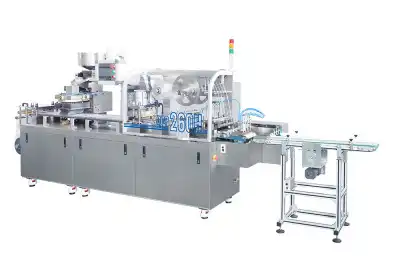Understanding Mini Blister Packaging Machines
What Defines a Mini Blister Machine?
Mini blister packaging machines are compact versions of their larger counterparts, designed to offer similar functionality in a smaller footprint. These machines typically handle smaller production volumes and are often more versatile in terms of the product sizes they can accommodate. The "mini" designation usually refers to the machine's physical size, production capacity, and energy consumption, all of which are scaled down compared to standard industrial blister packaging equipment.

Key Features and Capabilities
Despite their smaller size, mini blister machines come equipped with a range of features that make them suitable for professional packaging operations. Many models offer adjustable sealing temperatures, precise control over blister formation, and the ability to work with various materials including PVC, PET, and aluminum foil. Some advanced mini blister packaging machines even incorporate servo motors for improved precision and efficiency, as well as touchscreen interfaces for easy operation and quick changeovers.

Applications and Industries
Mini blister machines find applications across numerous industries. They're particularly popular in pharmaceuticals for packaging pills, capsules, and small medical devices. The cosmetics industry utilizes these machines for packaging samples, single-use products, and travel-sized items. Additionally, mini blister packaging equipment is widely used in the electronics sector for components and small gadgets, as well as in the food industry for portion-controlled items and specialty products. Their versatility makes them an attractive option for startups, research and development departments, and companies exploring new product lines.

Advantages and Limitations of Mini Blister Machines
Benefits of Choosing a Mini Blister Packaging Machine
Opting for a mini blister machine comes with several advantages. The reduced footprint is a significant benefit for businesses with limited floor space, allowing for more efficient use of available area. These machines often require less initial capital investment, making them accessible to smaller businesses or those just entering the blister packaging market. Mini blister machines are typically easier to operate and maintain, which can lead to reduced training time and maintenance costs. Their flexibility in handling small batches makes them ideal for companies with diverse product lines or those frequently changing their packaging requirements.
Potential Drawbacks to Consider
While mini blister packaging machines offer numerous benefits, they also have limitations that should be considered. The most obvious is their reduced production capacity compared to larger industrial machines. This can be a significant drawback for businesses with high-volume packaging needs. Mini blister packaging machines may also have limitations in terms of the maximum product size they can accommodate, which could restrict their use for larger items. Some models might offer fewer customization options or advanced features found in larger, more expensive systems. Additionally, while suitable for small to medium runs, mini blister packaging machines may become less cost-effective for very large production volumes due to their slower speed and smaller output.
Comparing Mini Blister Machines to Standard Equipment
When evaluating mini blister packaging machines against standard industrial equipment, several factors come into play. Mini machines generally offer greater energy efficiency and lower operating costs due to their smaller size and reduced power requirements. They often provide faster setup and changeover times, which can be advantageous for businesses with frequent product changes. However, standard equipment typically offers higher production speeds and greater output, making it more suitable for large-scale operations. Standard machines may also provide more robust construction and longer lifespans, which can be beneficial for businesses planning for long-term growth. The choice between mini and standard blister packaging equipment often comes down to balancing current needs with future scalability and production volume projections.
Factors to Consider When Choosing a Mini Blister Machine
Assessing Your Production Requirements
Before deciding on a mini blister packaging machine, it's crucial to thoroughly evaluate your production needs. Consider factors such as your average daily output, the variety of products you need to package, and any seasonal fluctuations in demand. Analyze the dimensions and shapes of your products to ensure they fall within the machine's capabilities. It's also wise to project your future needs – while a mini machine may suit your current production, consider whether it will still be adequate if your business grows significantly in the next few years. Remember, underestimating your requirements can lead to production bottlenecks, while overestimating might result in unnecessary expense and unused capacity.
Technical Specifications and Compatibility
When selecting a mini blister packaging machine, pay close attention to its technical specifications. Key factors include the machine's cycle time, maximum blister size, and the types of materials it can process. Ensure that the blister packaging machine is compatible with the specific plastics or foils you intend to use for your packaging. Consider the machine's sealing method and whether it aligns with your product requirements—some products may require specific sealing techniques for optimal protection or regulatory compliance. Additionally, evaluate the machine's control system, looking for features like programmable settings, data logging capabilities, and integration potential with your existing production line.
Cost Considerations and Return on Investment
While mini blister packaging machines often come with a lower initial price tag compared to larger systems, it's important to consider the total cost of ownership. Factor in ongoing expenses such as energy consumption, maintenance requirements, and the cost of consumables. Evaluate the machine's expected lifespan and compare it against your projected production needs. Consider the potential for increased efficiency and reduced labor costs that a mini blister machine might offer. It's also worth investigating the availability and cost of spare parts, as well as the manufacturer's support and service network. Ultimately, calculate the return on investment by considering how the machine will impact your production capacity, product quality, and overall operational efficiency.
Conclusion
Deciding whether a mini blister packaging machine is right for your business involves careful consideration of your specific needs, production requirements, and future growth plans. These compact machines offer significant advantages in terms of space efficiency, flexibility, and cost-effectiveness for many small to medium-sized operations. However, they may not be suitable for all businesses, particularly those with high-volume production needs or very large products. By thoroughly assessing your requirements, comparing specifications, and considering long-term costs and benefits, you can make an informed decision that aligns with your packaging goals and contributes to your business's success.
Contact Us
Ready to explore if a mini blister machine is the right fit for your packaging needs? Contact Zhejiang Haizhong Machinery Co.,Ltd. at [email protected] for expert advice and tailored solutions to optimize your packaging process.





